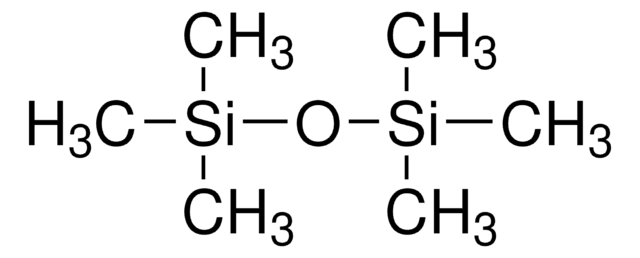DMPS5X
Dimetilpolisiloxano
viscosity 50 cSt (25 °C)(lit.)
Sinônimo(s):
Polidimetilsiloxano
About This Item
Produtos recomendados
forma
liquid
Nível de qualidade
peso molecular
~3,780
viscosidade
50 cSt(25 °C)(lit.)
InChI
1S/C2H6OSi/c1-4(2)3/h1-2H3
chave InChI
SEUDSDUUJXTXSV-UHFFFAOYSA-N
Procurando produtos similares? Visita Guia de comparação de produtos
Aplicação
- in culturing mouse embryos
- in preparation of oil-based nano-adjuvant candidates
- to reduce the brain movement in the post-cat craniotomy process
Ações bioquímicas/fisiológicas
Código de classe de armazenamento
10 - Combustible liquids
Classe de risco de água (WGK)
WGK 2
Ponto de fulgor (°F)
609.8 °F - closed cup
Ponto de fulgor (°C)
321 °C - closed cup
Equipamento de proteção individual
Eyeshields, Gloves, multi-purpose combination respirator cartridge (US)
Certificados de análise (COA)
Busque Certificados de análise (COA) digitando o Número do Lote do produto. Os números de lote e remessa podem ser encontrados no rótulo de um produto após a palavra “Lot” ou “Batch”.
Já possui este produto?
Encontre a documentação dos produtos que você adquiriu recentemente na biblioteca de documentos.
Os clientes também visualizaram
Nossa equipe de cientistas tem experiência em todas as áreas de pesquisa, incluindo Life Sciences, ciência de materiais, síntese química, cromatografia, química analítica e muitas outras.
Entre em contato com a assistência técnica






